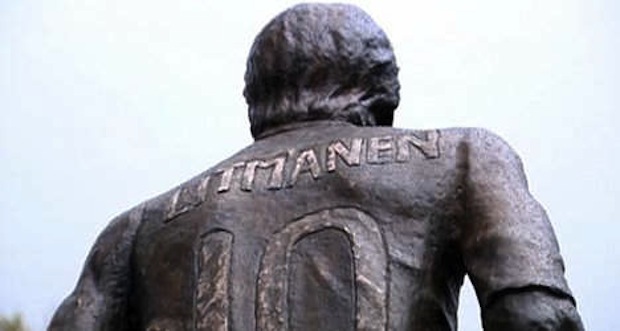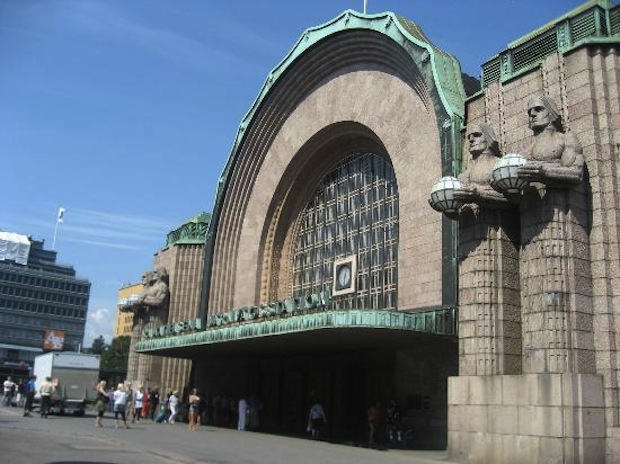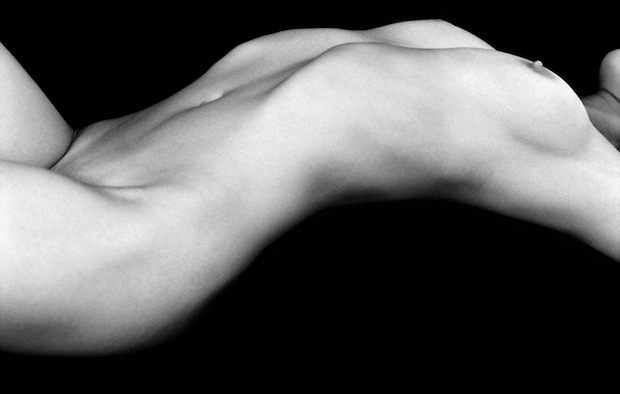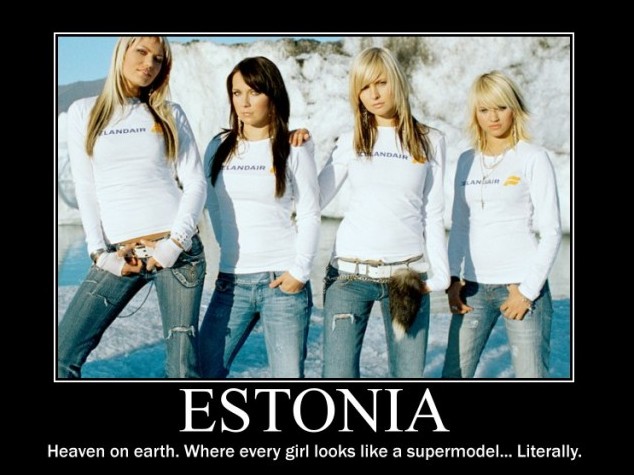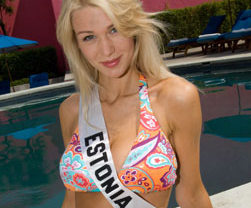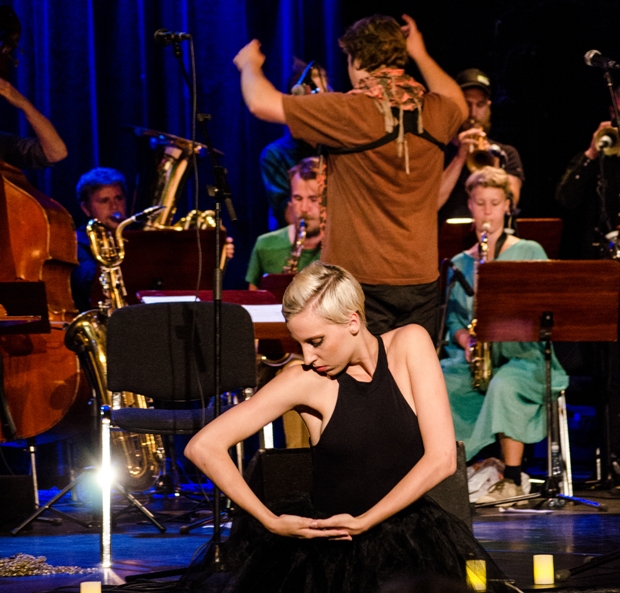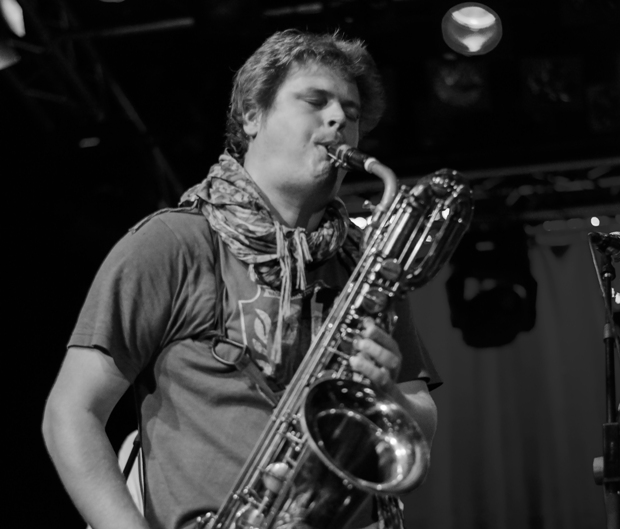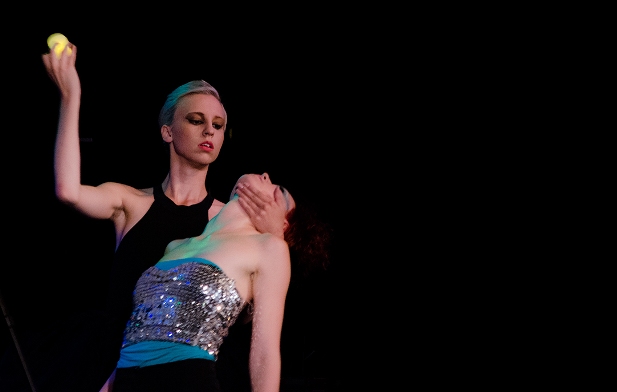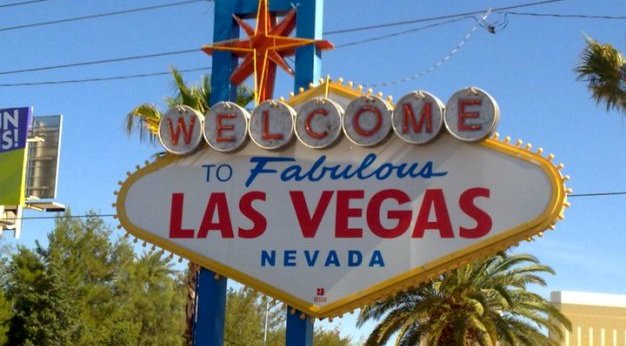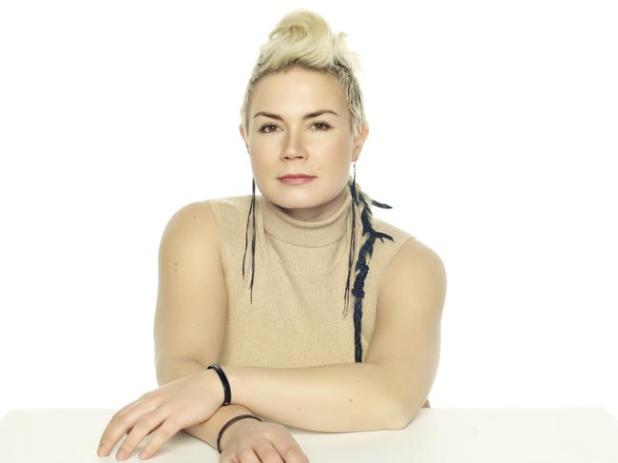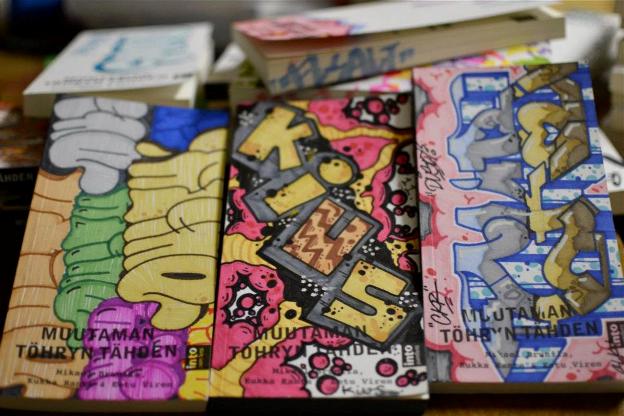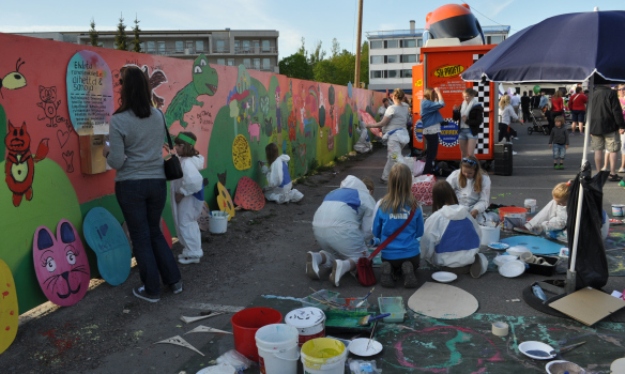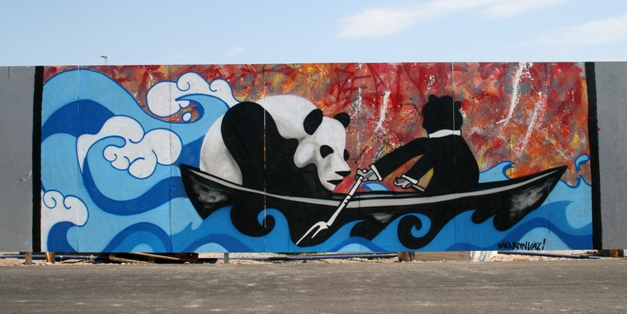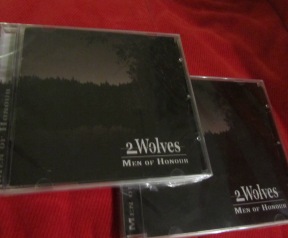Text by Eva Blanco
Marimekko is all about colour. That is the first thing you realize when you step into the headquarters of the brand located in Herttoniemi (East Helsinki). Suddenly your eyes start travelling from one canvas to another – their patterns being all around the building as part of the interior decoration-, and you get the growing conviction that you have just entered into some kind of wonderland, where people are stylish, smile at you for no reason, and, most probably, are also able to levitate and make themselves transparent to avoid being disturbed. Anything is possible when you are surrounded by all those fabrics printed with their daring designs. But, be careful before continuing to read! It has been proved recently that colour, when consumed in large quantities, may have dangerous consequences on your brain – it can enhance your creativity or put you in a summery mood! We have already warned you, from now on, it ́s your own responsibility!
Translated into English, Marimekko means “Mari’s dress”. Mari, Mery, María… For Armi Ratia, who founded the brand in 1951, this ubiquitous name contained two of the most fascinating characteristics, simplicity and functionality. All of us – you too, unless your mother was told you were to be a boy- could have been Mari. That is why it seems so easy to identify ourselves with the name, maybe as easy as Armi wanted it to be for all of her fellow citizens to be able to also identify with her textile designs. A personal wish that, more than sixty years later in the history of the brand, has not only been widely accomplished but indeed seems modest compared to the growing international dimension of the house.
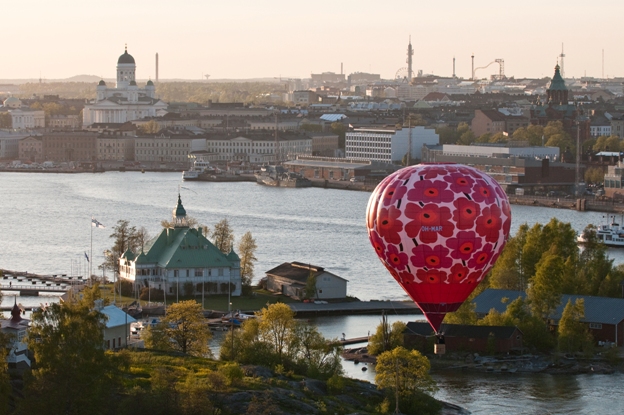
In 2011, the year of its half-century anniversary, Marimekko opened its own flagship store on the corner of Fifth Avenue and Broadway in New York, together with six more commercial spaces in the United States – especially located on the West Coast. Plus, due to the strong sales growth, the Asia-Pacific region became the brand’s second-biggest market, following the lead of Finland, which represented up to 64% net sales in the same period. Last year the company entered the Chinese market via Hong-Kong, thus securing a concrete business strategy that has been defined by its President and CEO, Mika Ihamuotila, in these words: “Dynamic expansion requires patience from the company and its shareholders, but I am convinced that this will be fruitful for Marimekko in the long term”.
With the arrival of Spring , Minna Kemell-Kutvonen, Marimekko’s Creative Director, has allowed us into their offices and beloved textile printing factory so that we can visit them and discuss the future challenges a brand with a well defined local identity needs to confront when its products are being sold in approximately 40 countries. Minna gives me a firm handshake, smiles generously and, as if to break the ice, confesses that it feels so good to finally have a face to face interview, rather than speak only by phone as she had been doing lately. Then, when she begins to talk with passion about the brand’s creative philosophy, I can’t help wondering…Would it ever have crossed her parent ́s mind to have called her Mari? After all, both names did start with a capital “M”.
If you had to describe the brand to somebody who has never heard about it, what would you say?
All in all, Marimekko is an aesthetic understanding and interpretation of our everyday life. We translate it into shape, colours and patterns. We could say that it is more like a way to live. More than sixty years of history has proved that our aim is to be present in every detail of our customer’s world – not only through fashion and clothing but also through fabrics where print creates a special atmosphere in the home, or even through the cups you use for your daily coffee break!. When you are an aesthetically orientated person, and you love to arrange space in a particular way, you have to take into account that you look at the same objects constantly and, thus, a very special bond needs to be established with them. So, I believe they are also an active part of your life.
Then, of course, there are some days when you wake up longing to introduce some new, and often contradictory, products into your personal space, and though it may seem to be a little disturbing for the usual harmony, by doing that you can find something truly fresh. In this house we are always open to these kind of contradictions. For instance, if you think about our history, in Finland it is commonly known that the creation of the brand after the war, in 1951, coincided with a time when the most part of the population living in the countryside decided to move to the cities. And their life there was different from the one they used to have back in their villages, their regular activities now were much closer to the academic spheres and to the office work. So, from Marimekko they were able to find some of those things they were missing the most from their homeland…maybe even some emotions like the one inspired by the sunrise, interesting winds, rocks, sea landscapes….In short, they brought a reinforced romantic feeling back into their lives. And that ́s how the brand became a part of them.

So, we could conclude that some concepts such as the reinterpretation of the rural world, or the search for comfort inside the Finnish nature are key issues for the company…
Of course those are key concepts for us, but, if you think about the present context, now that people have been living in the cities for several generations, there is a growing opposition between constructions and natural spaces. And I consider this to be a very interesting collision concerning both nature and architecture: they must coexist together, understand each other, and somewhere in that dialogue there is an intersection which Marimekko also tries to be part of.
So, how would you say the creative philosophy has evolved over more than sixty years of history?
The main idea for our creations is related to the aesthetic thinking. In every decade we have trusted our designers intuition, how they perceive the world and reflect the time they are living in through their compositions. But I have to say that now the world has become bigger for us as a brand than it used to be. We didn ́t operate at the same international level in the past as we currently do – though we had some interesting global contacts, we worked mostly in Finland and Scandinavia. Our beginnings go back to the first printed fabrics, which later on were transferred to women’s fashion collections. Back then we were a smaller company, but now that we are immersed in a global market with customers in varied locations, we need to have a deeper understanding of different cultures and religions, as those are two of the factors shaping people’s everyday lives.
Thus, we try to conceive our designers ideas and creations also as an ingredient of the global discussion. In Finland, due to our geographical situation, there is a very interesting conversation taking place between East and West, and we got a lot of influences from the Russian esthetic but, at the same time, also from the whole of Scandinavia that surrounds us. Also, Finnish people we are quite practical – we tend to solve things without complicating matters. I believe that approach has helped us in Marimekko to give effective answers in this new era of global demand.
What do you consider to be the main challenges for the future in this global market context?
In my view, one of the biggest challenges we will have to face in the near future is maintaining our ability to discuss and look at things from an open perspective – normally the creative team have that broad vision, but sometimes they are also challenging. So, as a designer, you should follow your intuition and expertise, but at the same time you are required to be receptive to that demands coming from people located in different market areas, like, for instance, the west coast in US.
Can you tell us a little bit more about your main markets nowadays?
Well, basically we would be talking about Finland, Japan and the Scandinavian countries. Then, in the last two years we have opened stores in the U.S, Hon-Kong and Australia. So it is very exciting to compare all these different markets, and realize that, despite the cultural gap, people act in a coincidental way everywhere. There is not such a dramatic difference if you look at the broad landscape. All of us have to sleep, eat and to go to work, and, at the emotional level, we are all looking for similar things. Plus, the Asian market seems to be really close to the Scandinavian one, overall in the kind of attitude they manifest…they are more profound, sophisticated, quieter!.
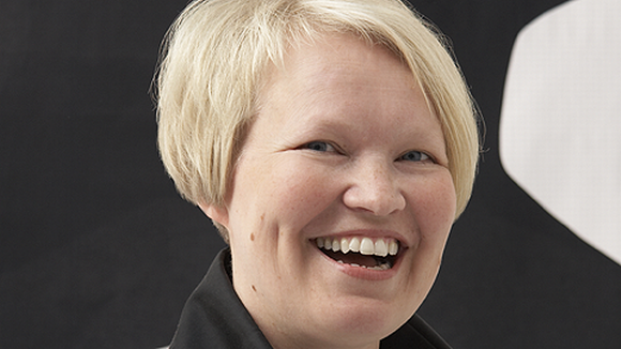
Due to its undeniable success, the Unikko pattern (1964) was one of the main achievements in the Marimekko’s history, which other do you have?
First off, let me give you a little context on the Unikko pattern. Armi Ratia, the founder of Marimekko, had strictly told the designers she didn ́t want to see any flowers in their patterns because natural flowers are already so beautiful and there was no point in trying to copy them for our fabrics – she thought it was not possible to capture that beauty. However, moved by a very strong inspiration, our designer Maija Issola decided to draw a floral pattern so powerful that Armi herself couldn ́t deny its authenticity and spirit. So, through that independent way of thinking she created this graphical flower from her own perception and interpretation of this natural gift. In my view, it contains a very strong attitude that gets reinforced through the graphical elements. You can immediately see there is an intense flow coming out of it, and, either you love it or you hate it, but it certainly won ́t allow you to remain impassive.
Then, I think there are some other momentous in our history as a brand that have to be mentioned, like when at the beginning we started to adapt our printed patterns to female fashion collections – mostly dresses made of cotton. Also, in the early the seventies, we printed our canvas back packs and launch them to the market, it consisted on a very basic pattern suitable both for children, students and also for women going to work. Last but not least, we have our “Tasaraita” pattern (“even stripes” in English) designed by Annika Rimala in 1968. This fabric became an icon of the equality thinking, cause both men and women could wear it on their clothing. The message it sent was that everybody was at the same level. So, it had a big impact on society… and we are really proud of it.
What can you tell us about the work atmosphere in Marimekko?
At Marimekko we usually have open and fruitful discussions related to the projects we are developing, I guess it is because we are a very flat company. So, we are working quite closely to each other, and, though of course we have at the same time built up a well-structured organization, in any case there is a lot of interaction and dialogue among employees.
How do you normally face a new collection?
We start with a “kick off meeting” in which we settle the main theme the collection is going to be based on. Then, we launch this theme to our designers and establish some kind of deadlines to see how the three lines of the collection ( fashion, interior, and bags and accessorizes) work together. Once we have decided which designers are going to be in charge of the different parts of the collection, they start to sketch inspired by the theme we have settled on at the first meetings. We try to meet with them every week – most are freelancer designers, so they don ́t have their studio at the headquarters- and agree on some guidelines for the next steps of the creative process.
Which kind of themes do you usually work with? Can you give us an example?
Our themes are usually very abstract – and quite open in any case! That way it’s easier to come up with fresh and innovative ideas. Once the designers show us their first sketches we can start the discussion to add new concepts to their proposals. For instance, the upcoming fall collection (2013) is based on how beautiful different kinds of weather are, like rainy days with their gray skies, and the emotions they make you feel…we try to reflect that on our lines. Our designers have to find out which different elements the changing weather can bring to you, how you are exposed to it or interact with it. Actually, there are many angles to look at it, sometimes the final images on the patterns are more concrete, some others the whole process gets really subjective and artistic!.
What was the main inspiration you had for the Spring Collection we can now see in your shops?
The idea behind this Spring Collection was related to colour block and colour thinking. How colours influence your everyday life. Following this idea Tuula Pöyhönen has designed her beautiful “Suprema Collection”, inspired by supremacist Russian painter Kazimir Malévich. The thing is that we have a very good taste for colors in our house. In that sense, our designers get to work so freely cause we have our own printing meal and color kitchen. Sometimes they even bring references, like a special piece of wood or a stone, and try to find the exact pigment measurements to recreate it in their patterns. Something interesting happens also within an overlapping area (when printing two colors on the same canvas’ spot) as you can appreciate, for instance, in the Unikko pattern. That way you come across colours you had never seen before.

As regards to your work as a Creative Director, which are your main responsibilities, how do you go through the collections and put things together?
I am always working very closely with the people responsible for the improvement of the collections. That means, the head of fashion design, the interior line manager, and the bags and accessorizes line manager. They are all in my team. Once a week we go through every detail of the collections and discuss about the new sketches and colors proposals. Then, I am also responsible for the space design at our stores.
Could you tell us about your favorite patterns?
Well, it is so difficult to say! I love almost all, plus, different compositions bring different emotions to me. But, all in all, I am more of a graphical person, and I love those really clear and geometrical shapes…tough romantic or sophisticated patterns have the ability to somehow warm my heart. If I had to choose just one, I have to say that my favorite is “Isot Kivet” – big black “stones” on a white background, created by Maija Isola in 1956. There is also a more recent reinterpretation of this pattern, the Astro (2012), made by designer Jenni Tuomisen, and I love to mix them both!. In my view, they combine perfectly together even though they are totally different, not only in the design but also in the decades they were created.
Finally, which place does Marimekko represent on the Finnish design scene?
There is no doubt that Marimekko is a strong component on the national design scene. There are two other big brands in this field, which are Artic and Iitala, and I would say that the three of us together have helped compose what we could call the Finnish aesthetic. Probably all of us have also inherited many aspects from the predominant functionalism of Finnish architecture, and this kind of strong attitude derived from Alvar Aalto’s work. We need to reflect on how people experience the interior spaces and, at the same time, how well communicated those spaces are with their natural surroundings – that defines a core part of our philosophy.
Finally, we have a very close connection with design schools in Finland and we enjoy organizing design competitions so that we can find new talents, even recent graduates! We take them on as interns and, if we consider they are ready, we give them the possibility to print their ideas and to keep on growing under our maestros guidance. That is our way of taking care of our corporate responsibility as the big brand we are in Finland.
